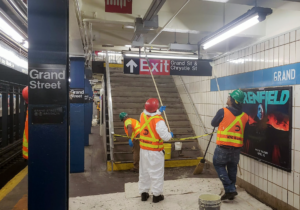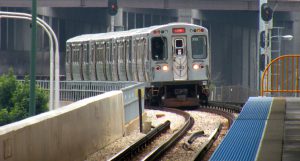BART Ridership Forecast Could Redefine South Bay Transit
Written by Kyra Senese, Managing Editor
One of the country's largest infrastructure projects, carrying Bay Area Rapid Transit trains through downtown San Jose, is taking shape. Nevertheless, the number of passengers who will use the extension—and its future as a key component for regional transport—is becoming increasingly uncertain.
A newly published ridership forecast predicts a 40% drop in passengers from previous projections for BART’s South Bay extension by local transportation authorities, according to a local news report. In 2040, instead of 54,600 people boarding trains on their way to business centers and San Jose State University, a new legally mandated forecast predicts 32,900 boardings.
It’s a setback for the long-awaited BART expansion, which could impact funding for South Bay bus and BART services if the Santa Clara Valley Transportation Authority, which is building the project, is unable to obtain a new taxpayer subsidy to keep BART trains operating, the report said.
Some analysts say the most recent ridership prediction remains too optimistic because it is based on 2019 data, which excludes the pandemic’s impact on BART ridership.
The prediction also excludes a critical element that could considerably increase passenger traffic: plans for a Google campus and housing development with a BART station at its heart, the report said.
SCVTA defended its original decade-old forecast as “reasonable, reliable, and defensible” in a statement. The prediction—based in part on land-use data from 2009—also predates Google’s plans for the downtown area, which could offset some of BART’s current ridership issues.
An SCVTA representative, Bernice Alaniz, stated that the latest forecast, which predicts 40% fewer riders, is “not an apples-to-apples comparison” to the agency’s higher projections.
The federally developed formula, unlike the SCVTA’s prior model, is intended to compare transit ridership across the country and excludes some local demand considerations, such as the potential of San Jose State University students using the BART extension at higher rates.
The Biden Administration is proposing a $500 million grant to the SCVTA, one of the largest single federal infrastructure awards in history, based in part on the projection.
The Federal Transit Administration stated that it tied megaprojects to 2019 statistics because commute patterns in 2020 and 2021 were too volatile, and “more stable ridership patterns did not occur until halfway through 2022,” which was too late for the $4.45 billion grant-awarding process.
At BART’s annual board session, Mark Foley, a Contra Costa County BART director, suggested that the organization should accept that ridership is stagnant. The agency still has one of the biggest ridership declines in the country, with passenger counts down more than 60% from 2019 levels, the report said.
The SCVTA is anticipated to pay BART $33 million in 2023 for the operation of the first two stations, which opened in Berryessa and Milpitas in 2020. When four new stations open in 2033, that figure is expected to rise to $77 million.





